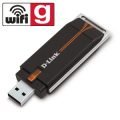USB 3.0 released. But I still want to say something about USB 1.0 and 2.0.
USB 1.0
* USB 1.0: Released in January 1996.
Specified data rates of 1.5 Mbit/s (Low-Speed) and 12 Mbit/s (Full-Speed). Did not anticipate or pass-through monitors. Few such devices actually made it to market.
* USB 1.1: Released in September 1998.
Fixed problems identified in 1.0, mostly relating to hubs. Earliest revision to be widely adopted
USB 2.0
* USB 2.0: Released in April 2000.
Added higher maximum speed of 480 Mbit/s (now called Hi-Speed). Further modifications to the USB specification have been done via Engineering Change Notices (ECN). The most important of these ECNs are included into the USB 2.0 specification package available from USB.org:
* Mini-B Connector ECN: Released in October 2000.
Specifications for Mini-B plug and receptacle. These should not be confused with Micro-B plug and receptacle.
* Errata as of December 2000: Released in December 2000.
* Pull-up/Pull-down Resistors ECN: Released in May 2002.
* Errata as of May 2002: Released in May 2002.
* Interface Associations ECN: Released in May 2003.
New standard descriptor was added that allows multiple interfaces to be associated with a single device function.
* Rounded Chamfer ECN: Released in October 2003.
A recommended, compatible change to Mini-B plugs that results in longer lasting connectors.
* Unicode ECN: Released in February 2005.
This ECN specifies that strings are encoded using UTF-16LE. USB 2.0 did specify that Unicode is to be used but it did not specify the encoding.
* Inter-Chip USB Supplement: Released in March 2006.
* On-The-Go Supplement 1.3: Released in December 2006.
USB On-The-Go makes it possible for two USB devices to communicate with each other without requiring a separate USB host. In practice, one of the USB devices acts as a host for the other device.
* Battery Charging Specification 1.0: Released in March 2007.
Adds support for dedicated chargers (power supplies with USB connectors), host chargers (USB hosts that can act as chargers) and the No Dead Battery provision which allows devices to temporarily draw 100 mA current after they have been attached. If a USB device is connected to dedicated charger, maximum current drawn by the device may be as high as 1.8A. (Note that this document is not distributed with USB 2.0 specification package.)
* Micro-USB Cables and Connectors Specification 1.01: Released in April 2007.
* Link Power Management Addendum ECN: Released in July 2007.
This adds a new power state between enabled and suspended states. Device in this state is not required to reduce its power consumption. However, switching between enabled and sleep states is much faster than switching between enabled and suspended states, which allows devices to sleep while idle.
* High-Speed Inter-Chip USB Electrical Specification Revision 1.0: Released in September 2007.
USB 3.0
At the first glance, the USB 3.0 ports look just like the older USB 1.1 and 2.0 ones. If a standard USB 2.0 port is made of a metal sleeve with a plastic tongue with four metal connectors embossed on it, the USB 3.0 standard features a plastic tongue with five miniature grooves that will shield the additional connectors that are necessary for the device to reach the amazing 4.7Gb/s data transfer rate.
SB 3.0 devices supporting SuperSpeed bus are expected to be available in commercial controllers in the second half of 2009. Consumer products are expected to become available in 2010.
